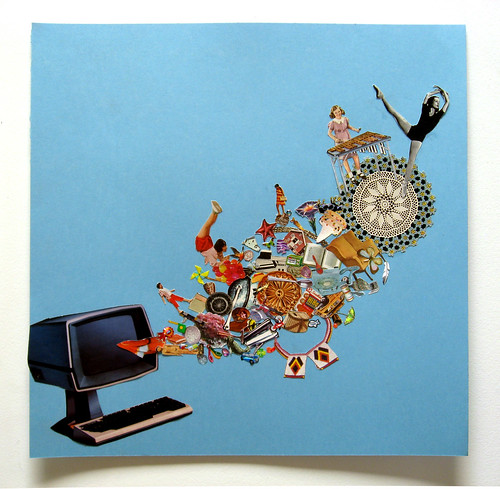I finished reading Susan Crawford‘s Captive Audience: The Telecom Industry and Monopoly Power in the New Gilded Age. Now, I want everyone to read it. More than that, I think everyone should read it.
In a goodreads status update as I was reading, I noted that I was learning more in the book than I remember learning from any of of my high school or undergraduate history classes. Perhaps this feeling comes from the face that Crawford has taken as her focus something that is immediately important to my life and the lives of anyone else living in contemporary society – information and the way we gain access to it.
Traditionally, such books focus on media corporations and their editorial approach to the way newscasts are crafted or what they don’t tell their audiences about given events. While Crawford touches on this lightly, her focus is more on the tubes through which the information travels, who owns them, and the regulation of all of it.
More specifically, the lack of regulation. Crawford draws appropriate comparisons between America’s first Gilded Age and the evolution of how the public and subsequently the government came to think of utilities like the railroads, electricity, water, and the telephones. While information tubes, specifically wired and wireless Internet access provide quite similar services and have take a place of necessity in people’s lives, Crawford documents a series of missteps by regulatory committees in assigning the same common carriage expectations to information infrastructure that it has historically applied to the above utilities.
The result has become a sub-par, monopolized, inequitable information network that lags behind many developing nations.
What I appreciated more than the historical context of the book was the accessibility of the content. One goodreads commenter noted that this was a topic about which he was interested and saw as important, but he hadn’t found a way in to the information.
In this realm, as with her blog, Crawford succeeded tremendously.
The machinations of the corporate world are of great import as I learned in my brief stint as a financial journalist, but the difficulty lies in crafting narratives about those goings on that can call to attention an audience outside of the financial and business field.
Here, Crawford succeeds again. Each piece is logically presented and embedded in a storyline that presents readers with characters and actions that are understandable. While certainly a presentation of information and facts, Captive Audience is also written in such a way that those facts and information are part of a story.
It’s a frightening story with antagonists that seem too immense for the typical citizen to move against. The events and actions are presented as “Here are the things that are being done to you,” and “Here is where your representatives are failing to act on your behalf.”
This is where I found myself needing one more chapter or some supplemental material as I concluded the book. Crawford ends with a possible blueprint for a way forward that would provide the type of access and infrastructure that would break the monopolies and better serve American citizens, but she stops short of advising what those citizens who might not be elected officials or philanthropists can do to affect change.
While I put the book down feeling more informed and ready to engage, I am still unsure as to what I can do to act on that engagement.
Crawford has written an important, thoughtful, and eye-opening book. It is to the benefit of anyone with an Internet connection to pick it up and read it. I’m certainly glad I did.
For more on Crawford, see the below video from her appearance on Moyers & Company.
 When I’m playing “What if?” and I come up with this scenario, I imagine someone tripping over a chord and the entire country making that cartoony power-down sound.
When I’m playing “What if?” and I come up with this scenario, I imagine someone tripping over a chord and the entire country making that cartoony power-down sound.